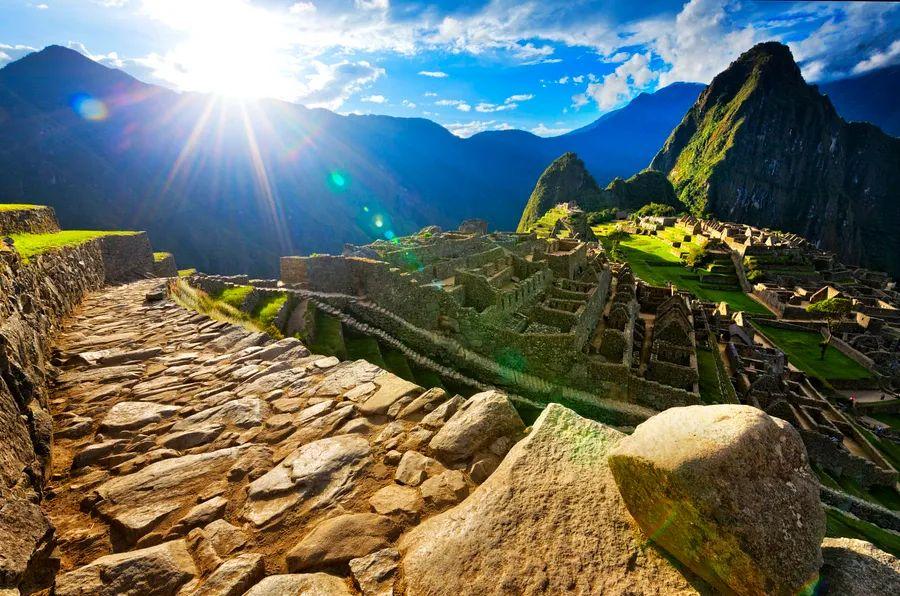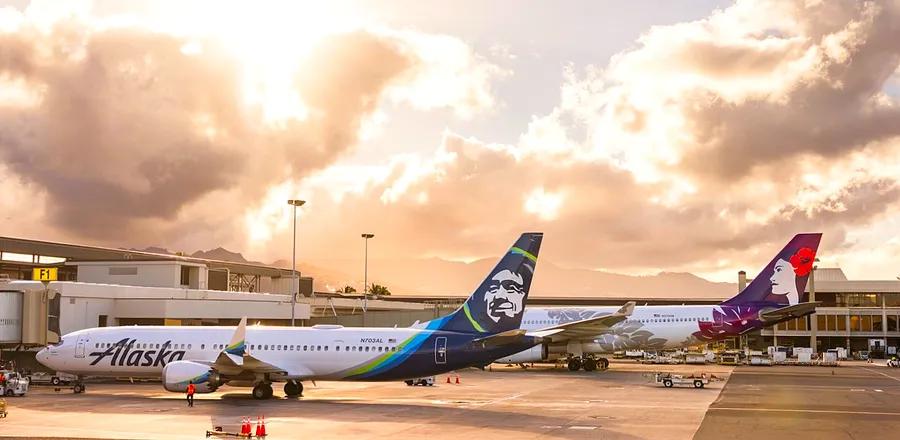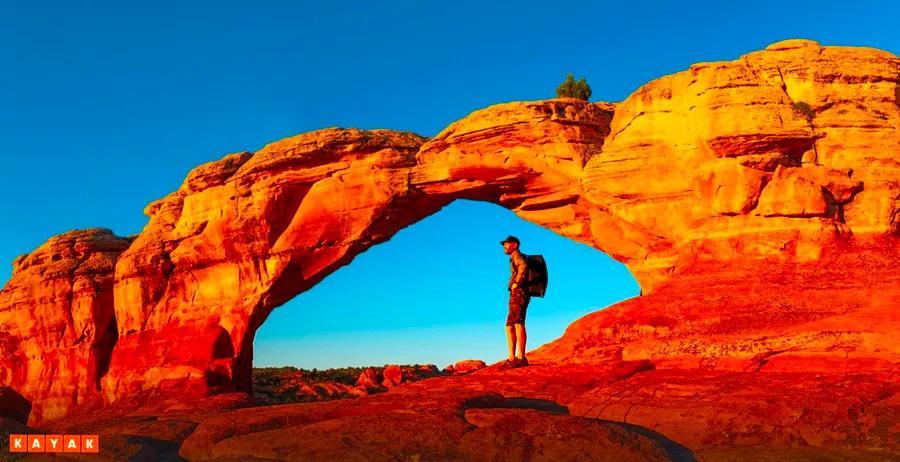Getting to Machu Picchu

The remote ruins of Machu Picchu, once part of the Inca Empire, are perched on a Peruvian mountain shrouded in mist. While these stunning ruins draw many visitors, they aren't as straightforward to access as one might assume.
If you plan to visit this magnificent site, be prepared for a lengthy journey that may involve multiple planes, buses, and trains. Additionally, be aware that some mask and vaccination requirements still apply for entry, so it's wise to check the latest information and prepare accordingly.
 A bird's-eye view of the iconic Machu Picchu ruins. MATHESS/GETTY IMAGES
A bird's-eye view of the iconic Machu Picchu ruins. MATHESS/GETTY IMAGESTo assist you in planning your trip to the "Lost City of the Incas," here’s a detailed guide covering everything you need to know about reaching Machu Picchu, including tips on utilizing your points and miles for the journey.
Traveling from the U.S. to Lima, Peru
Machu Picchu is located several hundred miles southeast of Lima, the capital of Peru, nestled high in the Andes Mountains. Given the multiple steps required to reach Machu Picchu, taking a direct flight from the U.S. to this vibrant city is often the best option, though you can also connect through another Latin or Central American hub.
If you choose to fly directly from the U.S., you'll find a range of nonstop flight options to Lima.
 Armas Square in Lima, Peru. JOHN COLETTI/GETTY IMAGES
Armas Square in Lima, Peru. JOHN COLETTI/GETTY IMAGESAmerican Airlines offers nonstop flights to Lima's Jorge Chávez International Airport (LIM) from Miami International Airport (MIA) and Dallas Fort Worth International Airport (DFW). LATAM Airlines provides service from MIA, John F. Kennedy International Airport (JFK), and Los Angeles International Airport (LAX). Additionally, SkyTeam partner Delta Air Lines operates flights from Hartsfield-Jackson Atlanta International Airport (ATL). United Airlines also has routes to Lima from Houston's George Bush Intercontinental Airport (IAH), and for Florida residents, JetBlue Airways and Spirit Airlines both offer nonstop flights from MIA to Lima.
As Delta and United employ dynamic pricing, securing good award fares can be a bit of a gamble. However, you can leverage credit card rewards to accumulate enough miles for your flights. Chase Ultimate Rewards can be transferred to United, while American Express Membership Rewards can be sent to Delta. If you hold Delta elite status, consider flying with LATAM, as your Medallion status and benefits are honored due to a reciprocal partnership between the airlines.
 A LATAM aircraft at Los Angeles International Airport (LAX). AARONP/BAUER-GRIFFIN/COLABORADOR/GETTY IMAGES
A LATAM aircraft at Los Angeles International Airport (LAX). AARONP/BAUER-GRIFFIN/COLABORADOR/GETTY IMAGESTo accumulate LATAM Pass miles, you can convert Marriott Bonvoy points to LATAM Pass at a 3:1 ratio, plus a bonus of 5,000 points for every 60,000 points transferred. If LATAM is your preferred choice and you wish to utilize miles, consider obtaining a Marriott cobranded credit card to earn bonus points that can be transferred for your journey to Machu Picchu. Other ways to earn LATAM Pass miles include opening one of the airline's cobranded credit cards or booking accommodations via Rocketmiles.
Oneworld travelers might want to consider American Airlines. The airline does provide an award chart, although finding fares as low as listed is uncommon due to dynamic pricing. Still, if you're fortunate (and traveling during off-peak times), you could score a one-way MileSAAver Off Peak award ticket for 17,500 AAdvantage miles in economy or a one-way MileSAAver award for 30,000 miles in business class.
For those without points or miles, Spirit offers tickets from Miami to Lima for often under $300 round trip. Just be aware that everything from your carry-on luggage to seat selection will incur additional charges on Spirit.
How to travel from Lima to Cusco, Peru, and the Sacred Valley
Hold on, you're not quite at the Andes yet! The next leg of your Peruvian journey is getting from Lima to Cusco. The fastest way to do this is by plane, which takes about an hour. While buses are available, the journey can stretch to around 25 hours or more, making flying the quickest option.
 LATAM flights from Lima to Cusco using LATAM Pass miles. LATAMAIRLINES.COM
LATAM flights from Lima to Cusco using LATAM Pass miles. LATAMAIRLINES.COMFor those flying with Delta elite status, the best choice is LATAM, offering one-way award tickets for just over 5,000 LATAM miles plus fees. However, if you prefer not to use miles, tickets typically cost around $50 each way. Adventurous travelers might save $10 to $15 by choosing budget airlines like Sky Airline, JetSmart Airlines, or Viva Air Colombia instead of LATAM.
 Cusco, Peru. ALEX DRAGOVIC/GETTY IMAGES
Cusco, Peru. ALEX DRAGOVIC/GETTY IMAGESOnce you arrive in Cusco, it's advisable to spend at least one night in the city or the nearby Sacred Valley, as reaching Machu Picchu will still require a significant amount of time after your arrival.
How to travel from Cusco to Aguas Calientes, Peru
This is where the excitement truly starts. The fastest way to reach the town of Aguas Calientes, the gateway to Machu Picchu, from Cusco is by train, which takes about three hours. Alternatively, if you choose to stay in the Sacred Valley first, there's a two-hour train option from Ollantaytambo. Other transportation methods, including buses and hiking, are also available.
Train
The most luxurious option for the journey to Machu Picchu is the Hiram Bingham, a Belmond-operated train priced at approximately $500 one-way. Besides this extravagant choice, the primary train services — the Expedition and Vistadome — are run by PeruRail. The Expedition train tickets cost around $60 each way, while the Vistadome tickets are about $75 one-way, offering an enhanced experience with snacks and even a fashion show featuring alpaca wool items for purchase.
 A PeruRail train en route to Aguas Calientes. PHOTON-PHOTOS/GETTY IMAGES
A PeruRail train en route to Aguas Calientes. PHOTON-PHOTOS/GETTY IMAGESInca Rail is another train service that provides various options for travelers between Cusco and Aguas Calientes, featuring its Voyager and 360 trains. Prices are similar to those of PeruRail, and like PeruRail, Inca Rail also offers a premium train experience. Inca Rail's Private train provides you and your group with an entire car, complete with a three-course meal, Champagne, and a Peruvian cooking class during the journey. This service even includes a private bus to Machu Picchu from the train station.
If you're torn between Inca Rail and PeruRail, consider your budget and schedule to make a choice. Select a train that fits your budget and is most convenient in terms of timing, as both services are quite comparable. Frequent flyers with LATAM Pass might prefer Inca Rail, as you can link your account to earn one LATAM Pass mile for every dollar spent with them.
Trains heading to Machu Picchu depart from the Poroy train station, located 11 miles from Cusco. If you're exploring the Sacred Valley, you can board from the Ollantaytambo train station, which is less than 40 miles northwest of Cusco. The final destination for each route is the Aguas Calientes station.
Bus and walking
Budget travelers, or those seeking a unique and picturesque experience, might want to consider the shuttle and hiking trail route known as the Hidroeléctrica. Since there are no roads leading directly into Aguas Calientes, driving isn’t an option. While you'll take a bus for most of the trip, a three-hour hike is necessary at the end.
To use this route, you’ll need to reserve a spot on a group shuttle (your hotel or any local tour operator can assist with this) departing from either Cusco or Ollantaytambo. The fare ranges from $10 to $25 per person, depending on the bus and group size. You’ll navigate through the Andes en route to Aguas Calientes, with a lunch stop in a town called Santa María. Once the shuttle drops you off at the seemingly remote Hidroeléctrica, you’ll enjoy a serene three-hour walk alongside the train tracks until you reach Aguas Calientes.
For this trek, it’s wise to pack lightly, as you’ll need to carry your belongings on your back. Some hotels in Cusco allow you to store larger suitcases or luggage if you plan to return to the city for a night after your visit to Machu Picchu, so consider staying at one of these establishments if you prefer not to bring everything with you on the hike.
Hiking
 The Inca Trail. DAMIAN BASANTE/GETTY IMAGES
The Inca Trail. DAMIAN BASANTE/GETTY IMAGESThere are numerous guided treks that culminate at Machu Picchu, ranging from a few days to several weeks depending on your choice.
The Inca Trail, the most renowned route, begins near Cusco. There are also alternative paths such as the Lares Trek and the Salkantay Trek, starting from different locations in Cusco and the Sacred Valley. These guided treks usually include meals and porters. It's advisable to book through an online travel agency or provider.
Walking
Some travelers have managed to walk the entire distance along the train tracks from Ollantaytambo to Aguas Calientes. However, this free, eight-hour trek can be hazardous at times due to train tunnels. It's closely monitored by track guards, so this option is not recommended.
The final leg: Aguas Calientes to Machu Picchu
 Aguas Calientes serves as the gateway to Machu Picchu. ELOJOTORPE/GETTY IMAGES
Aguas Calientes serves as the gateway to Machu Picchu. ELOJOTORPE/GETTY IMAGESAt this stage, you're tantalizingly close to your destination. Aguas Calientes is indeed the entrance to Machu Picchu, but the ruins are still out of reach. You'll need to tackle a steep ascent of about 4,000 feet to reach the citadel itself.
If you're planning to hike Huayna Picchu or Machu Picchu Mountain, you might want to skip this climb, as it can be quite tiring (though descending is much easier). If you do decide to walk, take the Camino Peatonal Trail. Be sure to start early, as this trek will take several hours.
 The bus route leading up to Machu Picchu. VILLAMILK/GETTY IMAGES
The bus route leading up to Machu Picchu. VILLAMILK/GETTY IMAGESAlternatively, you can opt for the bus to reach Machu Picchu. Buses depart every 10 to 15 minutes from Aguas Calientes, starting at 5:30 a.m. until 3:30 p.m. Be aware that there tends to be a line for the first bus, so arriving early at the bus stop is advisable. The journey takes about 20 to 30 minutes, and the last bus returns to Aguas Calientes at 5:30 p.m.
You can purchase bus tickets in advance or on the day of your visit starting at 5 a.m. The fare is $12 for a one-way trip or $24 for a round trip. Tickets are available at the bus station in Aguas Calientes or other certified locations in Cusco or Aguas Calientes. Some agencies also offer online booking, though this may incur an extra fee. If you've arranged your Machu Picchu tickets through a tour agency, inquire about bus tickets, as some packages include them.
Keep in mind that you can also buy your own Machu Picchu tickets online via the official website. Don’t forget to bring your passport, as it will be required for entry into the ruins.
Key takeaway
Yes, getting to Machu Picchu can be challenging. The journey involves multiple steps due to its remote mountain location.
 Reaching Machu Picchu takes time, but the reward is more than worth the effort. ANGELO ANTONIO CHIARIELLO/EYEEM/GETTY IMAGES
Reaching Machu Picchu takes time, but the reward is more than worth the effort. ANGELO ANTONIO CHIARIELLO/EYEEM/GETTY IMAGESRemember, you don’t have to tackle the entire trip in one stretch. Spend a few days in Lima, explore Cusco and the Sacred Valley, and perhaps enjoy a couple of nights in Aguas Calientes to get ready for your trek. Alternatively, you might want to relax in one of these locations after your Machu Picchu experience.
Peru offers a wealth of enchanting destinations beyond Machu Picchu, so taking your time to explore other attractions can truly enhance your journey and make the long travel worthwhile.

1

2

3

4

5
Evaluation :
5/5